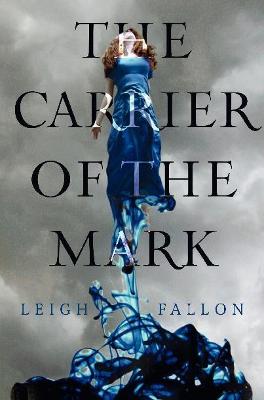Reviewed by ladygrey on
[a:Leigh Fallon|4611175|Leigh Fallon|http://photo.goodreads.com/authors/1296592483p2/4611175.jpg] has created a really interesting mythology, an old world paranormal that seems fresh and new to the genre currently. I enjoyed reading it (mostly) because the powers she's dealing with and the way she deals with them are interesting; because I enjoyed Adam and Megan and their relationship is magical and powerful and refreshingly mature.
I do like that it's a self-contained story. Even though it obviously could be part of a series of continuing adventures, there aren't any elements or mysteries that feel incomplete. There's just more room to explore.
But overall the book feels like it was published too soon; that it needed another draft because it feels half formed. The characters aren't especially well developed. We know their name and their history but not them, as if they're fully developed, living characters. They're just the bits of dialog that they're given without depth.
Also, the mythology, as interesting as it is, is really confusing. The three chapters in the middle where she tries to explain everything should have been enlightening and interesting and I just found them confounding. All of this power is derived from Danu and the Tuatha de Danann. And she says that the four Tuatha de Danann fought until three of them were dead. What she never says is that all four had children to pass their element onto. Is the entire thing derived from the single surviving Tuatha de Danann? And if so, how could that person pass on everything needed to evoke all four elements if they only possessed one? If the other three had children before they died, I need her to say that so we know there are four elemental families. But I think there's just the one? And you can't use the term "royal bloodline" without first introducing some form of royalty. The Tuatha de Danann are something akin to demi-gods - something more than human but less than god - so did they just decide to call the descendants of the surviving Tuatha de Danann royalty? Because she doesn't make that clear she just throws the term royal blood in there as if we have some context for it. And if that's the case - that royal blood just means someone is a descendant of the Tuatha de Danann - then every Marked One should by default also have royal blood. And yet, she makes a big deal that Megan is both royal blood and Marked. And Adam, Aine and Rian aren't. Which totally throws any understanding I thought I had about royal blood and Marked into complete dissarray. Then you get into Marked and Carriers; Marked being a person who actually evokes an element and there can only be four of those at a single time; and Carriers which are female Marked. I think. Or maybe they're just female descendants of the Tuatha de Danann. It's all hazy and not explained very well.
A little more clarity and a little more depth and this would have been a really good book. At it is, it's just ok. And yet, I have to give it credit because I did enjoy it and will probably read it again some time and will likely read the next one.
Reading updates
- Started reading
- 24 April, 2011: Finished reading
- 24 April, 2011: Reviewed
